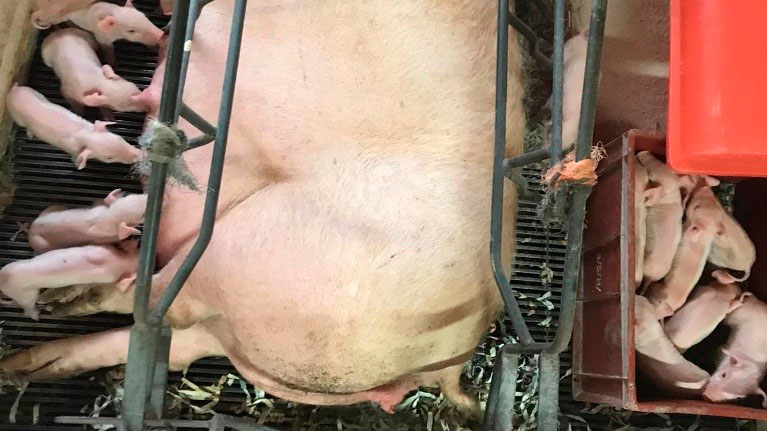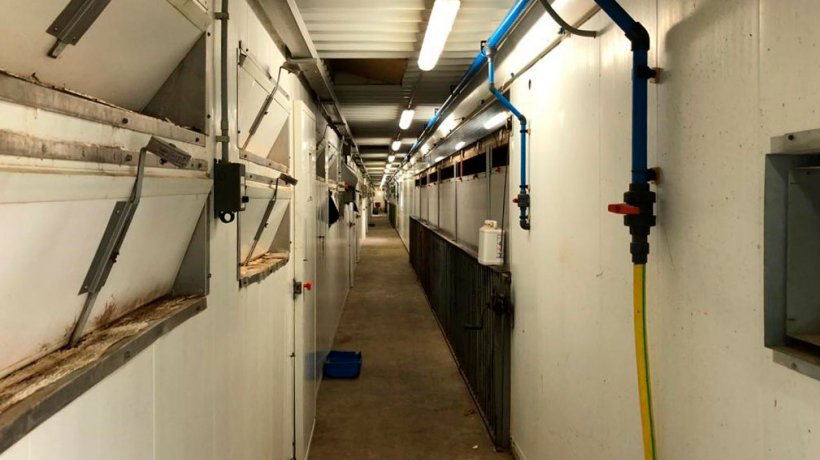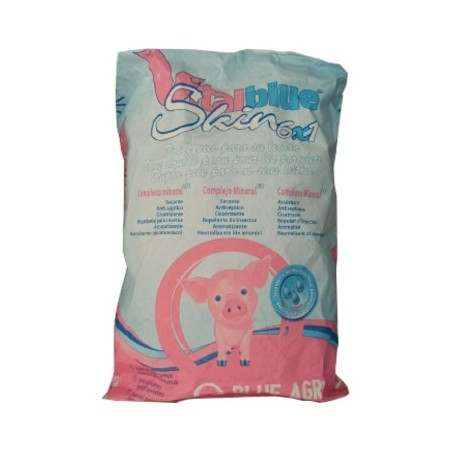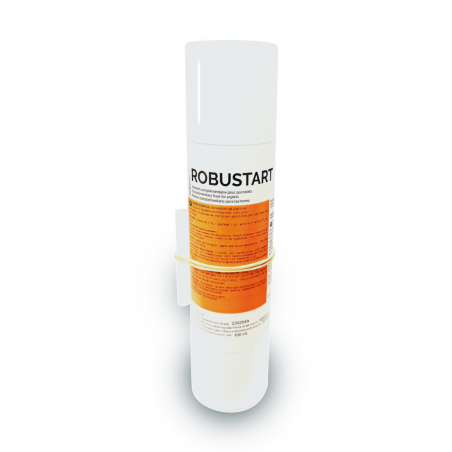Piglet management, colostrum intake, fostering, environmental comfort, etc. are factors highly related to the appearance and severity of diarrhea in neonatal piglets.
The importance of colostrum intake

The four professionals agree on the importance of colostrum intake and that hyperprolific sows pose a challenge with colostrum production in terms of quantity and quality being very important for small piglets whose number increases with litter size.
Guedes tells us that in Brazil their farrowing care includes drying each piglet and providing each one with a teat and colostrum. On the best farms, they even administer colostrum individually to the smallest pigs, even intragastrically.
They all agree that it is increasingly more common to use split suckling (Photo 1) so that all piglets get sufficient colostrum.

Photo 1. Split suckling helps make sure all pigs get sufficient colostrum.
Vraeghe shares that during farrowing they check to see if the umbilical cords are dry to determine which piglets were born first and they separate these ones out for a couple of hours to allow the rest to get colostrum.
Piglet management
The four professionals believe that fostering should take place between 12 and 24 hours after farrowing, once the piglets have had colostrum from their respective mothers.
Regarding the transfer of piglets, Cantín says that after colostrum intake, the litters should be sorted by weight and by number of teats, putting the smallest piglets on the second parity sows as soon as possible. However, with hyperprolific lines, sows cannot nurse 15-16 piglets on all farms, so each farm must assess the conditions with respect to its facilities, feeding, handling, etc. and based on that, see how many piglets the sows can handle. When sows are overloaded with too many piglets, diarrhea appears, not on days 2-3 but on days 4-5, due to poor piglet nutrition.
Another factor to consider is nurse sows. Ackerman explains that there are farms in which 5 or 10% of the pens are left free to put sows with leftover piglets and thus not move the piglets from their original room.
Vraeghe urges farms with frequent diarrhea problems to move their piglets before the onset of diarrhea. Once piglets are affected, sorting litters is asking for chaos.
Environment
Vraeghe emphasizes the importance of the environment. He explains that when facing diarrhea problems they always stress the importance having an environment that is comfortable for the piglet and the sow.
On the one hand, we must prevent too hot of temperatures in the farrowing room (>26ºC) that would "block" the sow, reducing her intake and affecting milk production. The sow needs the temperature to be 24-25ºC around farrowing, and the temperature must be lowered to 21ºC a few days later.
On the other hand, it is imperative to create a microclimate for the piglet. The piglet needs the temperature to be 35-37ºC the first few days and 30-32ºC after that. In Belgium it is common to use a combination of a heating pad and a heat lamp. The most important thing is for the farmer to learn to observe how piglets are lying and act accordingly.
Ackerman agrees with him on the importance of preventing air drafts over the piglet area. Temperature fluctuations and high humidity- these are clear factors that cause neonatal diarrhea.
Internal biosecurity
We asked the authors which internal biosecurity measures they consider important for preventing diarrhea.
Guedes notes that cleaning up the feces behind the sow the 3-4 days before and the 2-3 days after farrowing is an essential measure.
In Ackerman's opinion, one of the main sources of spread for diarrhea is the handling of the piglets when they are processed. In his experience, processing carts are a point of infection because they do not get properly cleaned and disinfected between litters. He also recommends changing gloves between litters.
He also attempts to reduce the spread that occurs through footwear by using footbaths with disinfectant, such as bleach (Photo 2). Other measures they adopt are minimized entry into the farrowing pens and also the cleaning and disinfection of the aisles with bleach when weaning or moving animals between rooms in order to prevent spreading and causing chronic cases of diarrhea. The latter is especially important on farms where PED or TGE have become chronic on the farm.
Photo 2. Using footbaths at the entrances to the farrowing rooms along with general organization and cleaning measures are important for lessening infection pressure.

Photo 2. Using footbaths at the entrances to the farrowing rooms along with general organization and cleaning measures are important for lessening infection pressure.
He points out one last interesting idea: he is in favor of mixing gilts and multiparous sows in the farrowing rooms since, in his opinion, litters from multiparous sows situated between gilts act as a natural barrier, reducing the risk of transmission of diarrhea from one gilt's litter to another gilt's litter.
If they process litters when there is already diarrhea, Vraeghe always recommends starting with the unaffected litters.
Cantín is more skeptical about taking extra hygiene measures that make farm management overly complicated. He is clear: prevention depends much more on immunity than on external factors. The basics are that the sow has antibodies and that she transmits them to the piglet through proper colostrum intake. If this is the case, with normal cleaning and disinfection measures there should be no problem. Conversely, when the piglet does not have sufficient levels of antibodies you do not eliminate the problem no matter how extreme the hygiene measures on a farm. He believes that all these measures sometimes distract from what really needs to be addressed.
We will use Guedes' summary to close this article: the three main points for controlling diarrhea are managing a proper environment for the piglet, providing immunity for the sow and for the piglet to acquire it through adequate colostrum intake, and controlling the infection pressure through cleaning, hygiene, and down time. None of these 3 aspects can falter if we want to adequately control diarrhea.








